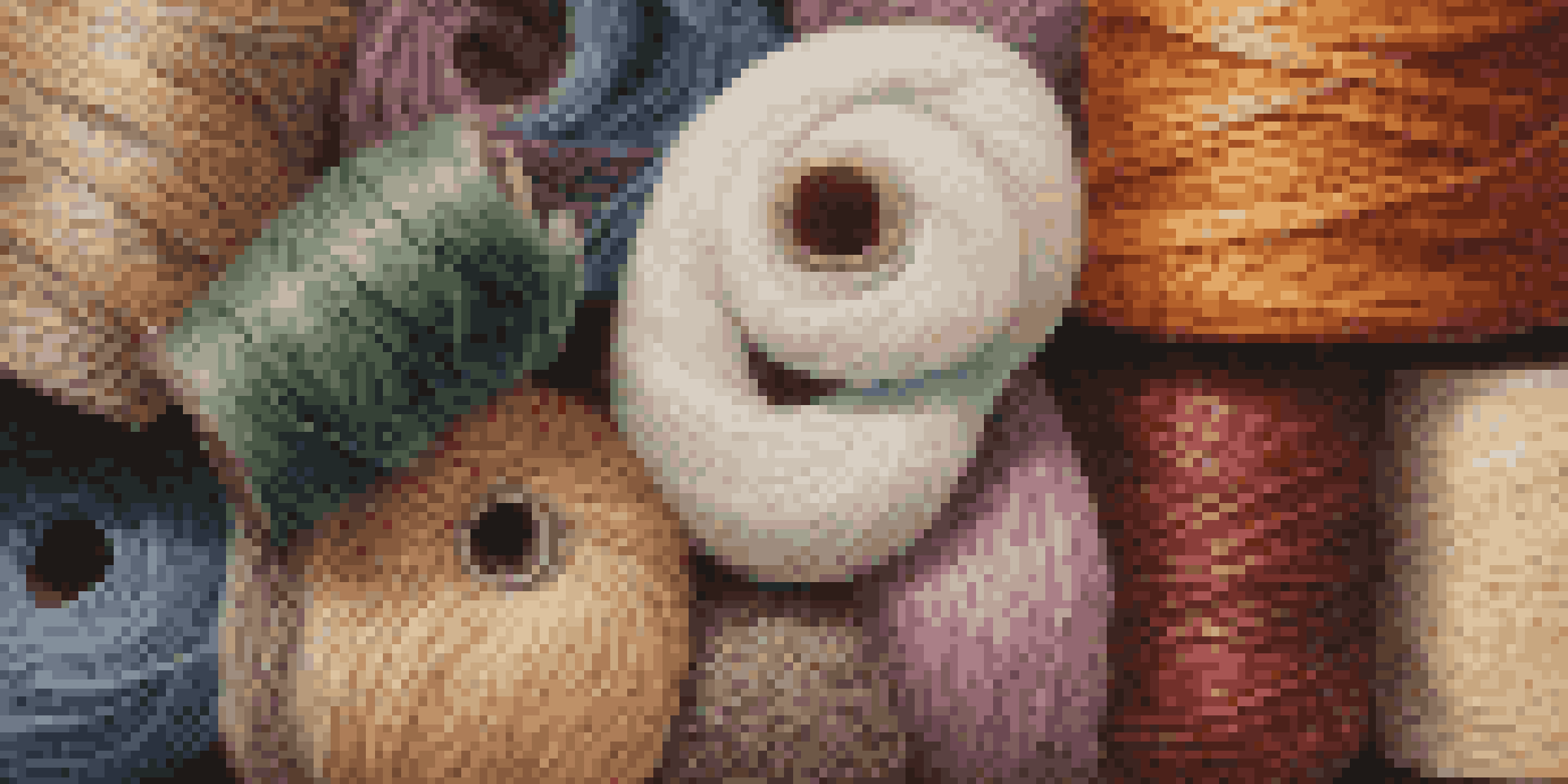Understanding Fiber Content: Impact on Your Projects

What is Fiber Content and Why It Matters
Fiber content refers to the amount and type of fiber present in a material, which can significantly affect its properties. Whether you're working with textiles, composites, or food products, understanding fiber content is crucial for achieving desired outcomes. Higher fiber content can enhance strength, durability, and functionality, making it an essential consideration in project planning.
The fabric of our lives is woven with the threads of innovation and sustainability.
For example, in textiles, a fabric with higher cotton content tends to be softer and more breathable, while synthetic fibers might provide added durability. In the realm of composites, materials with reinforced fiber content can better withstand stress and strain. By recognizing the importance of fiber content, you set the stage for better project decisions.
Ultimately, knowing about fiber content helps you align your materials with project goals, ensuring that the final product meets expectations on performance and quality.
Different Types of Fibers and Their Uses
Fibers come in various types, each serving unique purposes across different industries. Natural fibers like cotton, wool, and linen are often praised for their comfort and eco-friendliness, while synthetic fibers such as polyester and nylon offer durability and versatility. Understanding these differences can help you choose the right fiber for your project.

For instance, if you're designing activewear, synthetic fibers might be the better choice due to their moisture-wicking properties. On the other hand, if you're creating a cozy blanket, natural fibers would provide the softness and warmth that consumers seek. Recognizing the intended use of your project can guide you in selecting the right fiber type.
Understanding Fiber Content Matters
Fiber content significantly influences the durability, strength, and sustainability of materials across various industries.
Moreover, blending different fibers can yield innovative materials that combine the best characteristics of both natural and synthetic options. This versatility allows for more creative project outcomes.
How Fiber Content Affects Durability
Durability is a key factor in many projects, and fiber content plays a significant role in determining how long a material will last. Generally, materials with higher fiber content can endure more wear and tear, making them suitable for demanding applications. This durability is particularly important in industries like construction, automotive, and textiles.
Quality is not just what you put into a product; it's what the product delivers to the consumer.
For example, in the automotive industry, composite materials with high fiber content are used for their strength and lightweight properties, leading to more fuel-efficient vehicles. In textiles, fabrics designed for outdoor use often contain durable fibers to withstand harsh conditions. Understanding the relationship between fiber content and durability allows you to make informed choices.
When you prioritize durability in your projects, you're not just saving resources; you're also enhancing the overall user experience. A long-lasting product builds trust and satisfaction among consumers.
The Impact of Fiber Content on Sustainability
Sustainability is becoming increasingly important in project planning, and fiber content can significantly influence a material's environmental impact. Natural fibers are often more sustainable, as they tend to be biodegradable and require less energy to produce compared to synthetic options. However, it's essential to consider the entire lifecycle of the material.
For instance, while cotton is a natural fiber, its cultivation can require substantial water and pesticides. Conversely, recycled synthetic fibers can reduce waste and minimize the carbon footprint. Understanding fiber content helps you evaluate the sustainability of your materials and make better eco-friendly choices.
Natural vs. Synthetic Fibers
Different types of fibers serve unique purposes, with natural fibers offering comfort and eco-friendliness, while synthetic fibers provide durability and versatility.
By opting for sustainable fiber options, you not only contribute positively to the environment but also appeal to a growing market of eco-conscious consumers. This alignment with sustainability values can enhance your brand's reputation.
Testing and Measuring Fiber Content
To make informed decisions regarding fiber content, proper testing and measurement are crucial. Various methods exist for determining fiber content, including chemical analysis and mechanical testing. Familiarizing yourself with these testing techniques can ensure that the materials you choose meet the specified requirements for your projects.
For example, in textiles, the burn test can help identify fiber types based on how they react to flame. In composites, tensile testing can assess strength and durability related to fiber content. Understanding these testing methods can enhance your confidence in material selection.
By implementing thorough testing and measurement, you can mitigate risks and ensure that your project aligns with design objectives, ultimately leading to successful outcomes.
Common Misconceptions About Fiber Content
Despite its importance, there are several misconceptions about fiber content that can lead to poor project decisions. One common myth is that higher fiber content always equates to better quality, which isn't necessarily true. Quality depends on the type of fiber, how it's used, and the specific project requirements.
Another misconception is that all natural fibers are automatically superior to synthetic ones. While natural fibers can be biodegradable and comfortable, synthetic fibers often offer durability and performance benefits that are hard to overlook. Recognizing these distinctions can help you make more informed choices.
Testing Fiber Content is Essential
Proper testing and measurement of fiber content are crucial for ensuring material suitability and aligning project outcomes with design objectives.
By debunking these myths, you empower yourself to approach project planning with a clearer understanding of how fiber content truly impacts your outcomes.
Future Trends in Fiber Content and Materials
As industries continue to evolve, so too do the trends surrounding fiber content and materials. Innovations in biotechnology are leading to the development of new sustainable fibers, such as those derived from algae or agricultural waste. These advancements promise to revolutionize material choices and enhance project sustainability.
Moreover, the rise of smart textiles, which incorporate technology into fabric, is changing the landscape of fiber content. These fabrics can monitor health metrics or respond to environmental conditions, opening up new possibilities for applications. Staying updated on these trends will allow you to remain competitive in your field.

Embracing future trends in fiber content not only keeps your projects relevant but also positions you as a forward-thinking leader in your industry.